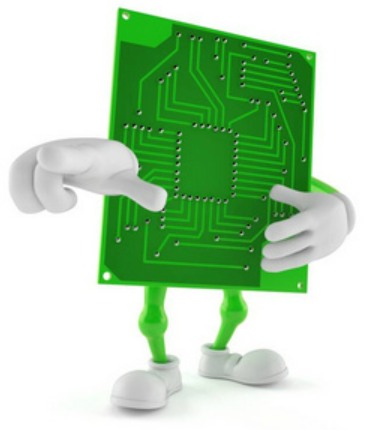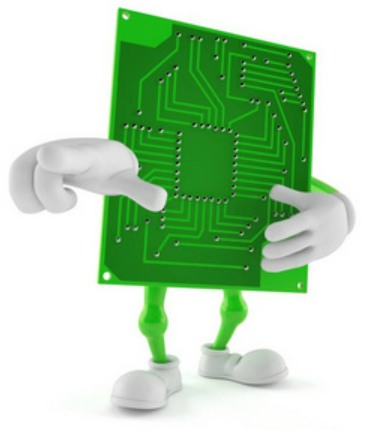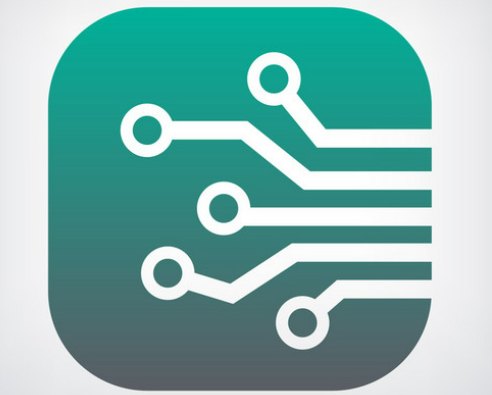
Double-sided soft PCB with two layers of conductors. The applications and advantages of this type of double-sided soft PCB are the same as those of single-sided soft PCB, the main advantage of which is increased wiring density per unit area. It can be divided into: a. There is no metallized hole and there is no covering layer; b. Without metallizing holes and with covering layer; c. With metallized holes and no covering layer; d. Having metallized holes or overlying layers. Double-sided soft PCB without overlay is rarely used in SMT plant.
2. Single-side soft PCB
Single-sided soft PCB, with only one conductor, with or without a covering layer. The insulating base material used varies with the application of SMT SMT processing products. Commonly used insulating materials are polyester, polyimide, polytetrafluoroethylene, soft epoxy-glass cloth, etc.
3. Multi-layer soft PCB
Soft multi-layer PCB as rigid multi-layer PCB, using multi-layer compaction technology, can be made of multi-layer soft PCB. The simplest multilayer soft PCB is a three-layer soft PCB formed by two layers of copper shielding on both sides of a single-sided PCB. This three-layer soft PCB is electrically equivalent to a coaxial wire or a shielded wire. The most commonly used multilayer soft PCB structure in SMT patch processing plants is a four-layer structure with metallized holes to realize interconnect between layers. The middle two layers are generally the power layer and the ground layer.
PCB circuit board compatibility design key points
Electromagnetic compatibility refers to the ability of electronic devices to work harmoniously and efficiently in various electromagnetic environments. The purpose is to make electronic equipment can not only suppress all kinds of external interference, so that electronic equipment can work normally in the specific electromagnetic environment, but also reduce the electromagnetic interference of electronic equipment itself to other electronic equipment. PCB circuit board as an electrical connection provider of electronic components, its compatibility design is what?

1, choose a reasonable wire width because the impact of transient current on the printed line of PCB circuit board is mainly caused by the inductance component of the printed wire, so the inductance of the printed wire should be reduced as far as possible.
2, according to the complexity of the circuit, the reasonable selection of PCB layer mathematics can effectively reduce the electromagnetic interference, greatly reduce the volume of PCB and the length of the current loop and branch line, greatly reduce the cross interference between signals.
3, the use of the correct wiring strategy using equal wiring can reduce the inductance of the wire, but the mutual inductance and distributed capacitance between the wires increase, if the layout allows, it is best to use the zigzag mesh wiring structure, the specific approach is one side of the printed board transverse wiring, the other side longitudinal wiring, and then in the cross hole with metallized holes connected.
4, in order to inhibit the crosstalk between PCB circuit board wires, in the design of wiring should be as far as possible to avoid long distance equal wiring, as far as possible to open the distance between lines, signal line and ground and power line as far as possible do not cross. Crosstalk can be effectively suppressed by installing a printed line between some signal lines which are very sensitive to interference.
PCB design electrical reliability requirements for wiring
1. PCB design
The wiring should minimize the wire resistance of the connecting wires of circuits at the same reference point.
The resistance of the printed wire is relatively small. Generally, the resistance of the wire 10mm long, 0.5mm wide and 105μm thick is 5 milliohm, which is not considered under normal circumstances. When considered, a general comparative estimate can be made according to the following principles:
For a wire of the same length, the wider the wire, the smaller the resistance; The thicker the wire, the lower the resistance.
2, the wire width should meet the requirements of the current load capacity of the printed wire, and as far as possible to retain the margin (increase by more than 10% on the basis of the design requirements), in order to improve reliability.
3. The allowable current for each 1mm wide printed wire is 1A(35um copper foil thickness).
4. The distance between conductors shall meet the requirements of 5.3.3.4 creepage Distance and electrical gap.
5, wire corner do not use right Angle or sharp Angle, should use 45 degree Angle or rounded corner.









